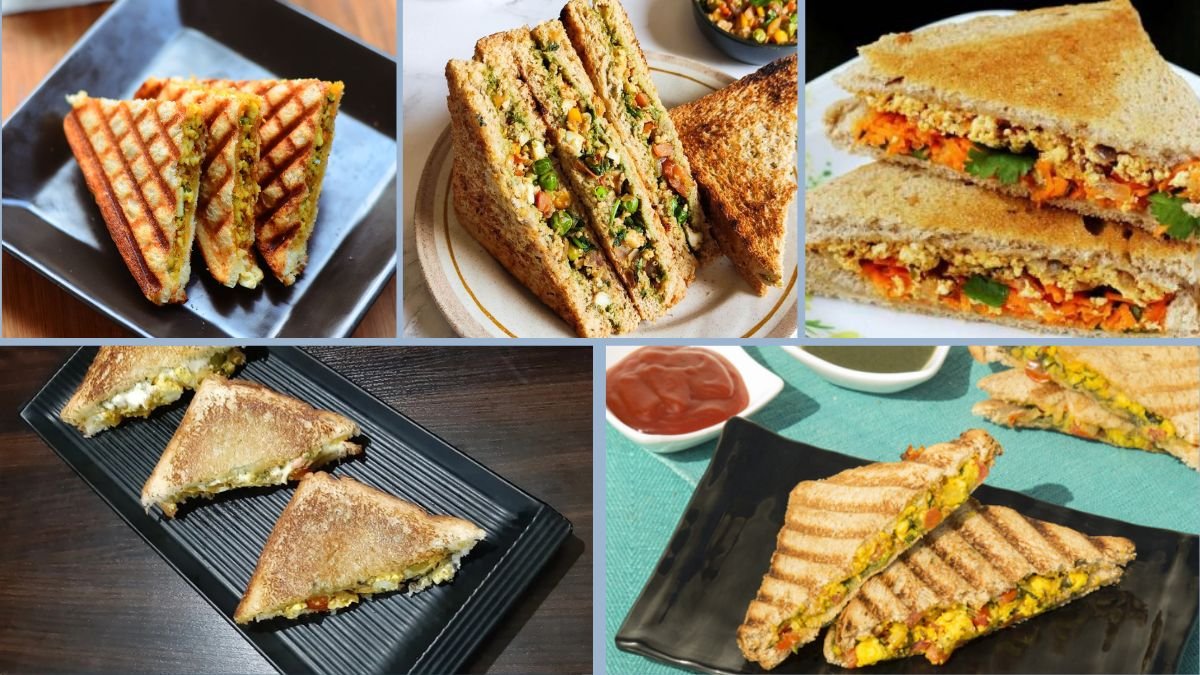Sandwiches are loved across the world for their simplicity, versatility, and quick preparation. In Indian households, sandwiches often get a flavourful twist with spices, chutneys, and fillings that reflect local tastes. One such popular and wholesome version is the Paneer Sandwich.
Paneer, or Indian cottage cheese, is rich in protein, calcium, and healthy fats, making it an excellent choice for vegetarians. While many sandwich recipes rely on butter for taste and crispiness, this article will guide you through a 5-step process to prepare a paneer sandwich without butter—delicious, nutritious, and completely vegetarian.
We’ll also explore the nutritional benefits, cultural context, variations, and tips to make this dish healthier while still retaining its authentic appeal.
Step 1: Gather Ingredients
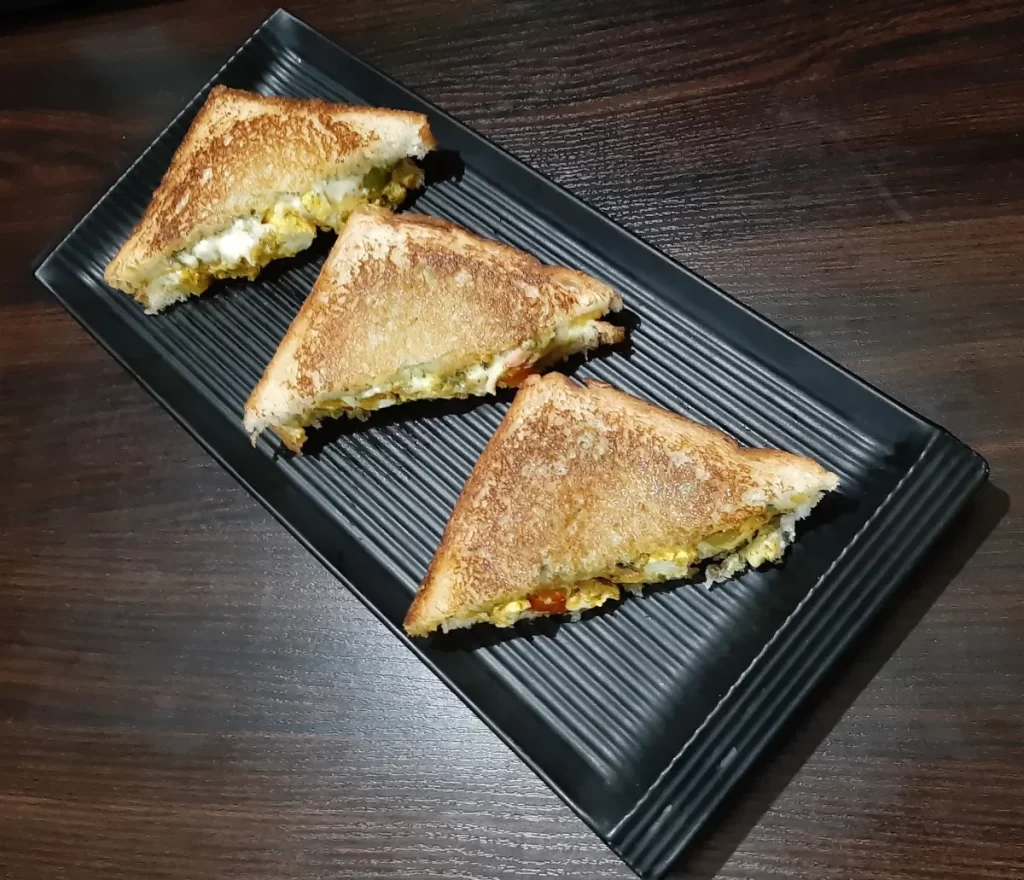
To prepare paneer sandwiches without butter, you’ll need fresh and simple ingredients:
For the Filling:
- 1 cup paneer (crumbled or grated)
- 1 small onion (finely chopped)
- 1 small tomato (finely chopped, deseeded)
- ½ small capsicum (finely chopped)
- 1–2 green chilies (optional, finely chopped)
- 1 tsp ginger paste
- ½ tsp cumin seeds
- ½ tsp turmeric powder
- ½ tsp garam masala
- ½ tsp red chili powder or paprika
- 1 tsp coriander powder
- Salt to taste
- Fresh coriander leaves, chopped
For the Sandwich Base:
- 6–8 slices of whole wheat or multigrain bread
- 2 tbsp green chutney (mint-coriander)
- 1 tbsp tomato ketchup (optional)
- Oil (for toasting, instead of butter)
Step 2: Prepare the Paneer Filling
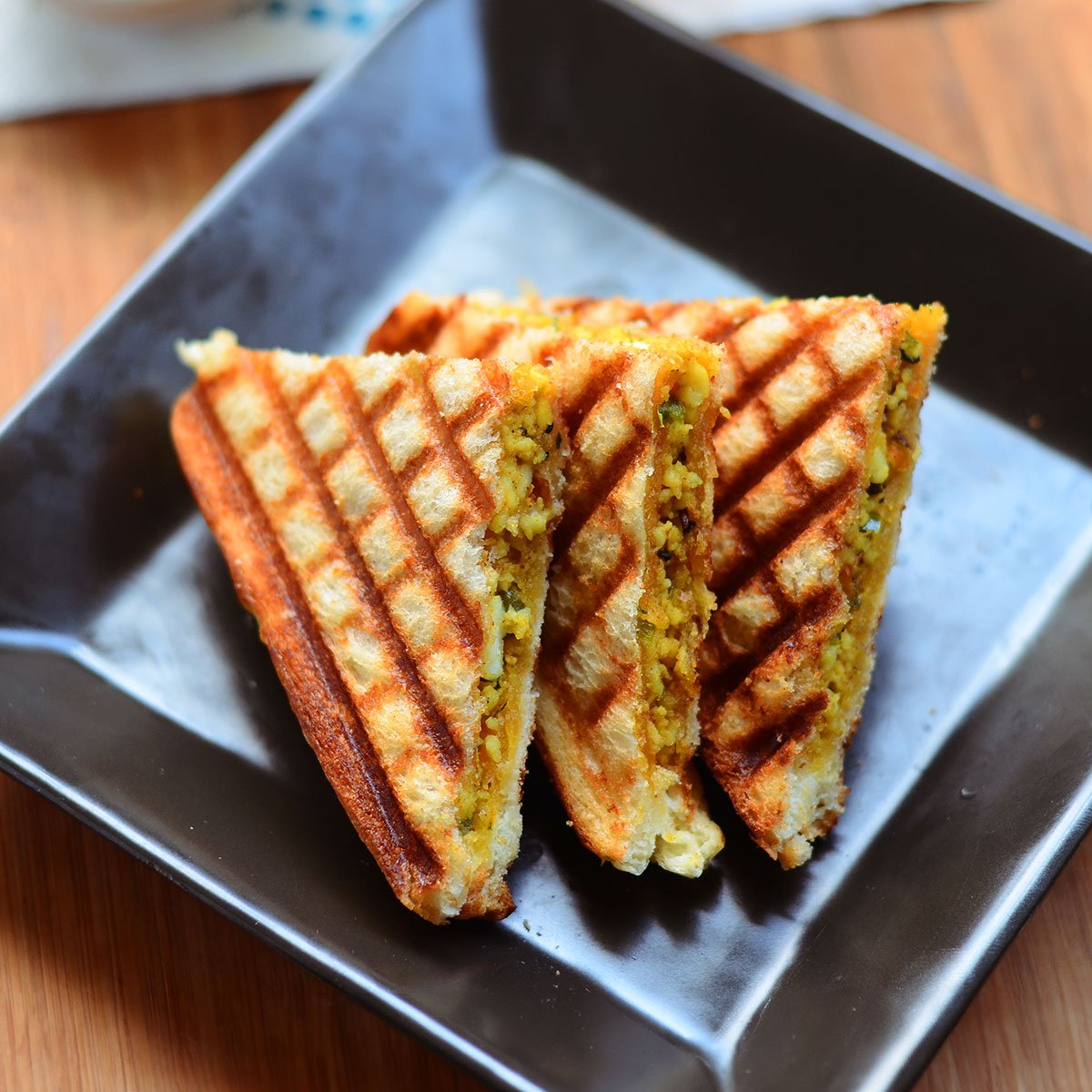
The filling is what makes this sandwich flavourful and satisfying.
- Heat 1 tbsp oil in a pan.
- Add cumin seeds and let them splutter.
- Add chopped onion and sauté until translucent.
- Add ginger paste, green chilies, tomato, and capsicum; cook for 2–3 minutes.
- Add turmeric, chili powder, coriander powder, garam masala, and salt. Mix well.
- Finally, add crumbled paneer and stir gently until combined.
- Cook for 2–3 minutes and turn off the flame.
- Garnish with fresh coriander leaves.
This mixture should be dry enough to spread inside bread slices without making them soggy.
Step 3: Assemble the Sandwich
- Place 2 bread slices on a clean surface.
- Spread green chutney on one slice and tomato ketchup on the other.
- Add 2–3 spoonfuls of paneer filling evenly on one slice.
- Cover with the other slice and press gently.
You can also add cucumber or lettuce slices for extra crunch and freshness.
Step 4: Toast or Grill the Sandwich Without Butter
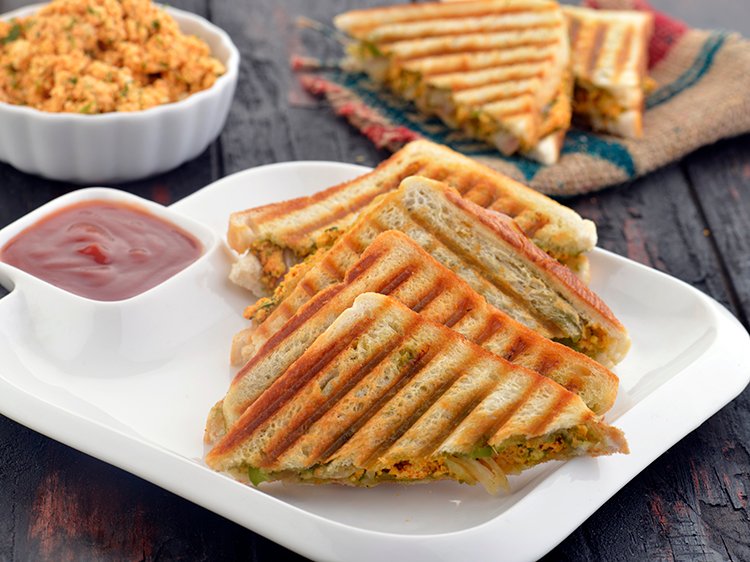
Butter is traditionally used to toast sandwiches, but it can easily be replaced with oil for a healthier version.
Options:
- On Tawa/Skillet: Heat a non-stick tawa, drizzle a few drops of oil, and toast each side until golden brown.
- In a Grill Pan: Brush the outside of the bread with a little oil and grill until crisp.
- In a Sandwich Maker: Lightly grease the plates with oil spray before toasting.
This step ensures crispness and a golden finish without the heaviness of butter.
Step 5: Serve and Enjoy
Cut the sandwich diagonally and serve hot with:
- Green chutney
- Tomato ketchup
- A side of salad or pickled vegetables
For a complete meal, pair it with a warm soup or light fruit juice.
Nutritional Benefits
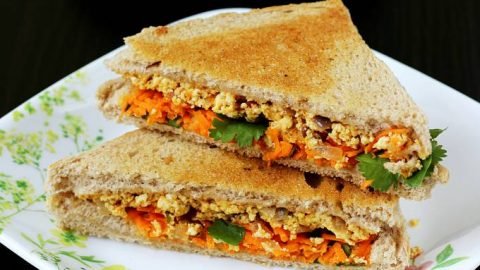
A butter-free paneer sandwich is not just delicious but also healthy:
- Paneer: High in protein, calcium, and healthy fats; promotes muscle and bone health.
- Whole wheat bread: Provides fibre and complex carbohydrates.
- Vegetables: Add vitamins, minerals, and antioxidants.
- Oil instead of butter: Reduces saturated fat intake while still giving crispness.
This makes it a perfect option for children’s lunchboxes, office snacks, or quick breakfasts.
Cultural Significance
Paneer sandwiches are a fusion of Indian and Western cuisines. Sandwiches as a concept came from Europe, but Indians adapted them with paneer, chutneys, and spices to suit local palates. Today, you’ll find paneer sandwiches served everywhere—from street stalls and college canteens to cafes and home kitchens.
The dish reflects India’s creativity in adopting global foods while preserving its own flavour identity.
Common Mistakes and How to Avoid Them
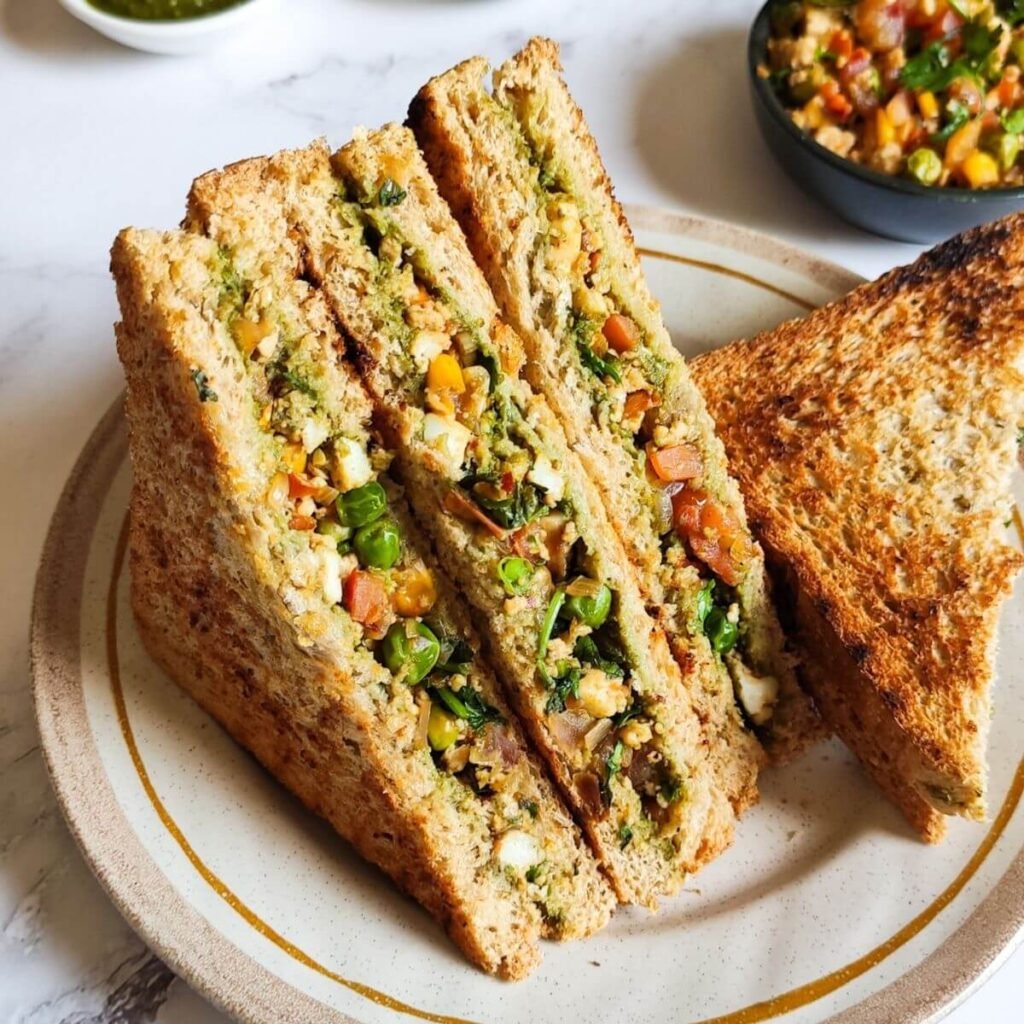
- Soggy bread: Ensure paneer filling is not watery. Cook tomatoes and capsicum until dry.
- Overcooked paneer: Paneer should be cooked lightly to retain softness.
- Too much oil: Use a brush or spray instead of pouring oil while toasting.
- Unbalanced flavour: Always taste the filling before stuffing to adjust spices and salt.
Variations to Try
- Cheese Paneer Sandwich: Add grated cheese for a richer taste.
- Veggie Paneer Sandwich: Include grated carrots, spinach, or cabbage in the filling.
- No-oil version: Toast in an oven or air fryer for an oil-free option.
- Spicy Paneer Sandwich: Add extra green chilies or chili flakes for heat.
Conclusion
This 5-step recipe for paneer sandwich without butter proves that healthy and tasty food can go hand in hand. By using fresh paneer, crunchy vegetables, aromatic spices, and substituting oil for butter, you can enjoy a wholesome snack that’s light yet filling.
Whether enjoyed as breakfast, evening tea-time snack, or even packed in a lunchbox, paneer sandwiches are versatile, easy to prepare, and crowd-pleasing.
For academic documentation or culinary exploration, this recipe showcases how traditional Indian ingredients can reinvent a global dish while maintaining nutritional value and cultural depth.
Paneer sandwiches without butter are not just a recipe—they’re a lifestyle choice that blends health, taste, and tradition beautifully.
